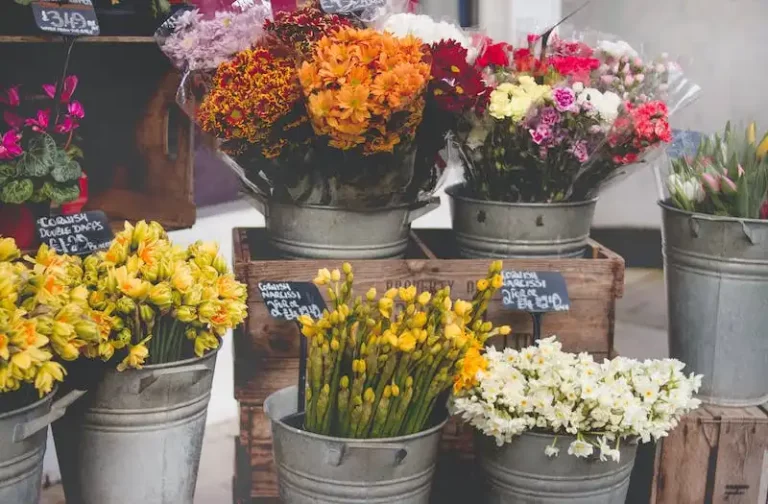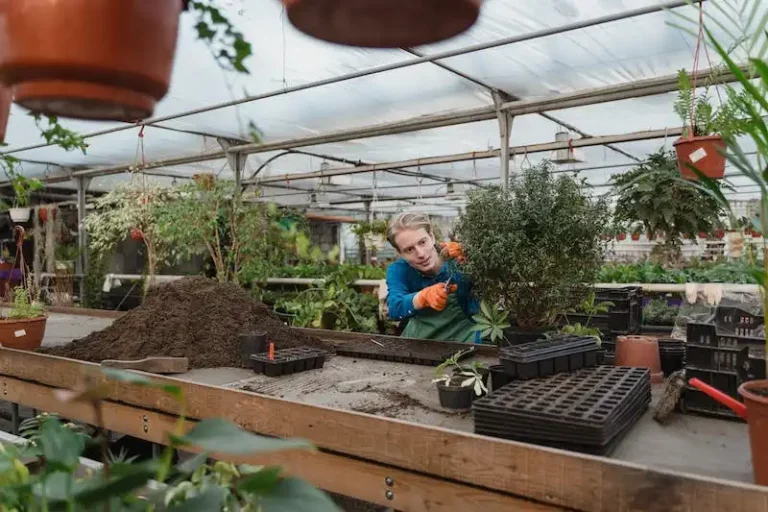Did you know that many weeds you see in your garden are actually edible and can be used as herbal medicine? These plants may not be as pretty or well-known as the flowers you carefully cultivate, but they have hidden qualities that make them a wonderful addition to your diet. Not only do they provide essential vitamins and nutrients, but they also add flavor to your meals.
Some of the most common edible weeds include plantain, daisy, chicory, stellaria, purslane, pineapple weed, mallow, and chickweed. While they’re often called “weeds”, these plants aren’t just pesky invaders in your garden. In fact, many cultures, including the Maori people, have been using them for medicinal purposes for centuries. Even if you’re not into foraging, it’s worth checking out these wild-growing plants and incorporating them into your meals.
One well-known edible weed is the chicory. Its leaves can be eaten raw or cooked and have a slightly bitter taste that adds depth to salads and other dishes. The root of the chicory plant can be roasted and ground to make a coffee substitute that is often used in Europe. Another edible weed is the daisy. Its petals are edible and can be used to garnish dishes, while the leaves can be brewed into a tea that is said to have a calming effect on the body.
If you’re not familiar with them, plantain and dandelion are two other common edible weeds that have great potential as herbal medicine. Plantain leaves have a slightly sticky texture and are often used to soothe skin irritations and treat minor cuts and wounds. Dandelion leaves can be added to salads for a slightly bitter flavor, and the roots can be dried and brewed into a tea that is known for its detoxifying properties.
While it’s advisable to do some research and educate yourself about each plant before eating it, many edible weeds are safe for consumption and can be a valuable addition to your diet. For example, trifolium, vulgaris, and allium ursinum are widely recognized as beneficial herbs with various health benefits. Some weeds, like self-heal and stellaria dioica, are not only nutritious but also have lovely flowers that make them a visually appealing addition to any garden.
So, don’t neglect the “weeds” growing in your backyard. Watch out for these edible plants and wear gloves if you’re unsure about potential allergies. Then, enjoy the flavors and benefits they bring to your meals. You’ll never look at these plants the same way again!
For more information and interesting articles like this, subscribe to our online newsletter and discover the potential of these overlooked plants.
5 Common Edible and Medicinal “Weeds” You Need to Know
When it comes to edible and medicinal plants, many people overlook the importance of weeds. However, they are often abundant, easy to find, and packed with nutritional and medicinal value. Here are 5 common weeds that you should know about:
| Weed | Scientific Name | Uses |
|---|---|---|
| Dandelion | Taraxacum vulgaris | Every part of this lovely yellow flower is useful. The leaves are rich in calcium and iron, making them a great addition to salads. The root is a potent herbal laxative, while the flowers can be made into a soothing ointment. |
| Plantain | Plantago major | This common weed has a variety of uses. The leaves can be used to soothe insect bites and alleviate skin irritations. The seeds are a great source of fiber and can help with bowel regularity. Plantain also has antibacterial properties. |
| Nettle | Urtica dioica | Despite its sting, nettle has many medicinal uses. It is rich in vitamins and minerals, particularly iron. It can be used as a diuretic, astringent, and even as a treatment for allergies. Nettle can be consumed as a tea or added to soups and stews. |
| Mallow | Malva sylvestris | The leaves and roots of this weed are commonly used in herbal medicine. Mallow is known for its soothing and anti-inflammatory properties. It can be used to relieve upset stomach, constipation, and even kidney stones. Mallow leaves can be eaten raw or cooked. |
| Purslane | Portulaca oleracea | This tiny green weed is often found in gardens and yards. It is abundant in omega-3 fatty acids and antioxidants. Purslane has a sour and salty taste, making it a nice addition to salads and soups. It also has potential anti-inflammatory properties. |
Next time you’re out in nature or even in your own backyard, take a closer look at the weeds around you. You’ll likely find that they have more to offer than you might have learned. From dandelions to plantain and nettle to mallow, these common weeds can be a valuable source of food and medicine. Just remember to do your research and be cautious when wildcrafting, using online resources, and never consume any plants without proper identification.
Plantain
Plantain is a common plant that many people consider a weed. There are two main types of plantain: Plantago major, or broadleaf plantain, and Plantago lanceolata, or narrowleaf plantain. Both of these plants can be found growing in lawns, gardens, and along roadsides.
Plantain is often seen as a nuisance because it quickly spreads and takes over areas where other plants are trying to grow. However, these plants have numerous medicinal properties that make them useful in herbal medicine.
Plantain leaves have healing properties and are commonly used to soothe skin irritations and wounds. They can be crushed and applied directly to cuts, burns, and insect bites to reduce pain and promote healing. Plantain leaves have anti-inflammatory and antimicrobial properties, making them effective in treating various skin conditions.
The leaves can also be dried and made into teas, tinctures, or ointments. Plantain tea is commonly used to treat digestive complaints and respiratory issues, such as coughs and bronchitis. It can also be used as a mouthwash to soothe sore throats and oral inflammations.
Plantain leaves are high in vitamins A and C, as well as calcium, magnesium, and potassium. They also contain compounds that have antioxidant properties, helping to protect the body against damage from free radicals.
In addition to its medicinal uses, plantain leaves are edible and can be added to salads, soups, and stews. They have a slightly bitter taste, similar to kale, and can be a nutritious addition to meals.
Overall, plantain is a versatile and beneficial plant that can be easily gathered and used for various purposes. It is important to properly identify plantain before foraging to ensure you are harvesting the correct plant. The leaves of plantain are distinct, with parallel veins and a ribbed pattern. The flowers are small and inconspicuous, typically forming in clusters on spikes.
Dandelion
Dandelions are little yellow flowers that are commonly found growing in gardens, lawns, and other grassy areas. They have bright green leaves that have jagged edges and a long stem. While they may be considered weeds by many, dandelions actually have a number of uses, particularly in herbal medicine.
The dandelion, scientifically known as Taraxacum officinale, has been used for centuries for its medicinal properties. The leaves, flowers, and roots of the dandelion plant are all edible and have various health benefits. Dandelion leaves can be used in salads, while the flowers can be used to make dandelion wine or tea. Dandelion roots can be roasted and made into a coffee substitute.
Dandelions are rich in vitamins A, C, and K, as well as minerals like iron and calcium. They are also known for their diuretic properties, which can help flush toxins out of the body and promote healthy kidney function. Dandelion leaves have a slightly bitter taste, while the flowers have a sweet, honey-like flavor.
One of the most well-known uses of dandelions is as a natural remedy for digestive issues. Dandelion tea or dandelion root extract can help alleviate problems like constipation, bloating, and indigestion. The plant’s leaves are also believed to have a mild laxative effect, although this is not confirmed by scientific studies.
Dandelions have also been used traditionally to support liver health and detoxification. The plant is believed to stimulate the production of bile, which helps break down fats and aids in digestion. Dandelion may also have anti-inflammatory and antioxidant effects, protecting the liver from damage caused by free radicals.
In addition to its digestive and liver benefits, dandelion also has other potential health benefits. Some research suggests that dandelion may have anti-inflammatory properties that could help reduce pain and swelling. It may also have antibacterial and antiviral properties, although further research is needed.
It’s important to note that dandelions can often be confused with other plants, particularly look-alikes like the Senecio and Sonchus genera. These plants may resemble dandelions, but they are not safe for consumption. If you’re unsure about the plant you have, it’s best to consult a knowledgeable herbalist or botanist.
Dandelions are generally considered safe for most people, but they may cause gastrointestinal upset in some individuals. Some people may also have an allergic reaction to dandelion, so it’s recommended to test for allergies before consuming large amounts of the plant.
Overall, dandelions are a useful and versatile herb that can be easily found in your own backyard or purchased online. Whether enjoyed in a salad, brewed into a tea, or taken as a supplement, dandelion can provide various health benefits and can be a great addition to your herbal medicine cabinet.
Garlic Mustard
Garlic Mustard is an edible weed that has been used for centuries in herbal medicine. It is also known as Alliaria officinalis or Jack-by-the-hedge. This plant is abundant and easy to find, making it a perfect addition to your backyard for both livestock and human consumption.
The young leaves of Garlic Mustard can be eaten raw in salads or cooked like spinach. They have a mild garlic flavor, which adds a unique taste to dishes. Moreover, the flowers of this plant can be used to make ointments or remedies for various ailments.
In traditional medicine, Garlic Mustard has been used by healers since ancient times. It is believed to have medicinal properties, such as being an anti-bacterial, astringent, and a source of vitamin C. The plant has also been used as a laxative, diuretic, and for treating colds, sores, and diarrhea.
Garlic Mustard can be used in various ways. For example, you can make a vinegar infusion by steeping the fresh leaves in vinegar for a few weeks. This infusion can be used as a tonic or added to food for extra flavor. Another method is to make a tincture by soaking the plant in alcohol, such as vodka, for a few weeks. This tincture can be taken in drops for its medicinal benefits.
If you are interested in wildcrafting, Garlic Mustard is a great plant to gather. It grows in moist woodland areas, along roadsides, and in open fields. You can easily identify it by its heart-shaped leaves and clusters of small white flowers. Be sure to watch for other similar-looking plants, such as daisies, dandelions, and plantain, which can sometimes be mistaken for Garlic Mustard.
| Characteristic | Description |
|---|---|
| Scientific Name | Alliaria officinalis |
| Common Names | Garlic Mustard, Jack-by-the-hedge |
| Growing Season | Early spring to late summer |
| Ancient Uses | Used by healers for various remedies |
| Medicinal Benefits | Anti-bacterial, astringent, laxative, source of vitamin C |
Garlic Mustard is a versatile and beneficial plant that should not be neglected. Its medicinal properties and abundance make it a valuable addition to any backyard or herbal medicine collection. So next time you come across this wild-growing herb, be sure to gather it and make the most of its potential.



